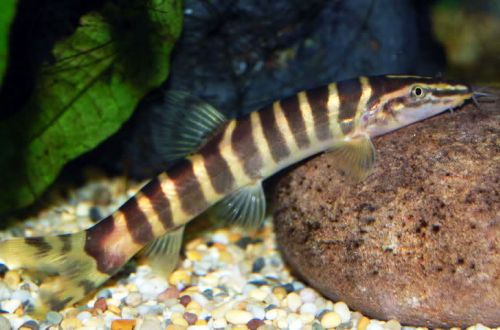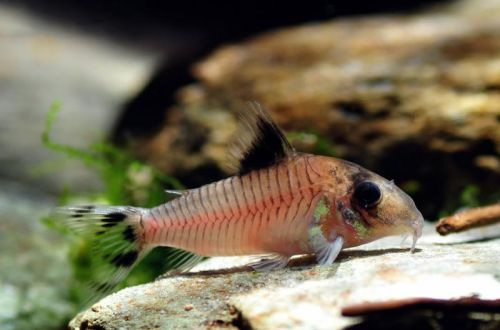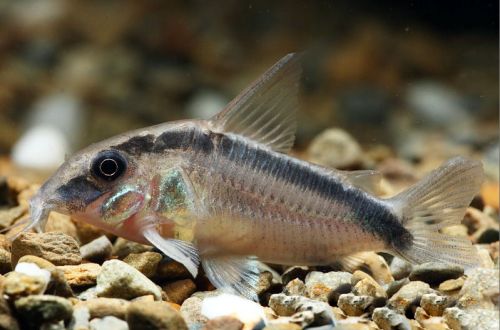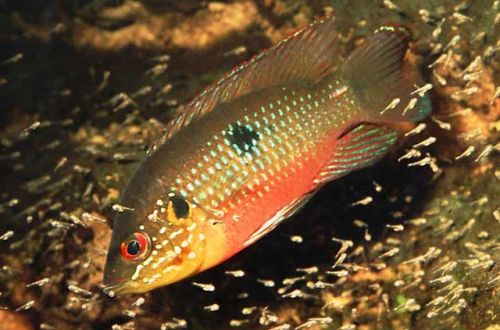
Botsia Pulhra
Botsia Pulchra or Loach “Golden Zebra”, the scientific name Sinibotia pulchra, belongs to the family Cobitidae (Loachers). Peaceful unpretentious fish. Easy to maintain and compatible with many popular species. Such a set of qualities allows it to be recommended to the general aquarium.

Contents
Habitat
It lives in the vast Pearl River basin in southwestern China in the provinces of Guangdong and Guangxi, the most densely populated and industrialized in China. Fish are found mainly in the upper reaches, since the lower reaches of the river and tributaries are heavily polluted. They prefer regions with clear water, moderate currents and rocky substrates.
Brief information:
- The volume of the aquarium – from 100 liters.
- Temperature – 20-25°C
- Value pH — 6.5–8.0
- Water hardness – soft to medium hard (2-15 dGH)
- Substrate type – fine gravel, rocky
- Lighting – subdued / moderate
- Brackish water – no
- Water movement – moderate / weak
- The size of the fish is 8–11 cm.
- Nutrition – any drowning
- Temperament – peaceful
- Content in a group of at least 3–4 individuals
Description
Adult individuals reach a length of about 8–11 cm. Sexual dimorphism is weakly expressed. Females are somewhat larger than males, other obvious differences are not observed. The body is elongated, the head is pointed. Near the mouth are sensitive antennae, with the help of which the fish finds food at the bottom. The body pattern consists of alternating stripes of brown and yellow.
Food
Undemanding to the diet look. Accepts various types of feed – dry, frozen and live. However, despite the omnivorous nature, the composition of food should be varied and combine several products. A monotonous diet should be avoided.
Maintenance and care, arrangement of the aquarium
The optimal size of the aquarium for a group of 3-4 fish starts from 100 liters. The design is arbitrary up to the personal preferences of the aquarist. If desired, you can recreate conditions close to the natural habitat. The main elements in this case will be rocky ground with several large boulders, driftwood and small clusters of plants, such as spiral wallisneria, anubias, mosses and ferns.
When keeping Botsia Pulchra, it is important to maintain a high quality of water with a suitable hydrochemical composition. This requires a productive filtration system, regular removal of organic waste and weekly replacement of part of the water (30-50% of the volume) with fresh water.
Behavior and Compatibility
Leads a secretive way of life, tends to occupy quiet areas of the aquarium between snags, plants under the leaves. Peaks of activity are associated with feeding. Compatible with many non-aggressive species. The content in the group is at least 3–4 individuals, with a smaller one, a change in behavior towards rejection of neighbors is possible.
Breeding / breeding
The breeding season in the wild coincides with the rainy seasons and is accompanied by migration to flooded regions where eggs are laid. Thus, spawning is stimulated by a whole set of external factors that are almost impossible to recreate in an aquarium. Mass fry are obtained from commercial fish farms using hormonal preparations.
Fish diseases
By their nature, non-ornamental fish species that are close to their wild relatives are quite hardy, have high immunity and resistance to various diseases. Health problems can be the result of inappropriate conditions, so before starting treatment, check the quality and parameters of the water. If necessary, bring all values back to normal and only then begin treatment, if necessary. Read more about diseases, their symptoms and methods of treatment in the section “Diseases of aquarium fish”.





